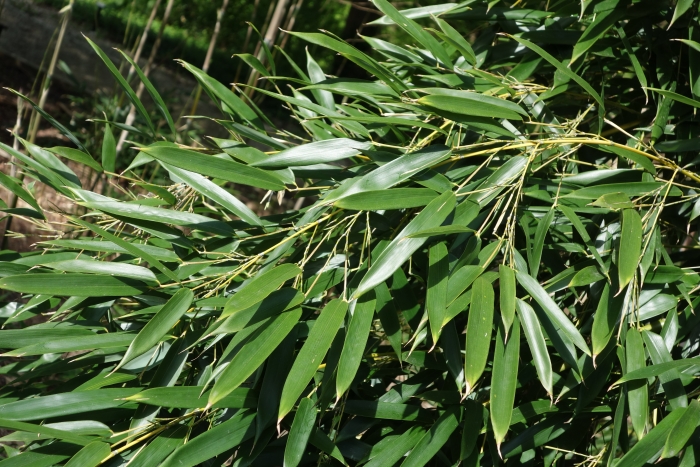Yellow Groove Bamboo
(Phyllostachys aureosulcata)
Yellow Groove Bamboo (Phyllostachys aureosulcata)
/
/

Daderot
CC0
Image By:
Daderot
Recorded By:
Copyright:
CC0
Copyright Notice:
Photo by: Daderot | License Type: CC0 | License URL: http://creativecommons.org/publicdomain/zero/1.0/deed.en | Uploader: Daderot | Publisher: Wikimedia Commons | Title: Phyllostachys_aureosulcata_-_Stanley_M._Rowe_Arboretum_-_DSC03437.JPG | Notes: User created page with UploadWizard |











































Estimated Native Range
Summary
Phyllostachys aureosulcata, commonly known as Yellow Groove Bamboo, is a perennial, evergreen bamboo species native to the temperate regions of Zhejiang Province in China, where it thrives in forest margins and open woodlands. It is characterized by its striking appearance, with tall, upright culms that can reach up to 30 feet in height and 2 inches in diameter, and a distinctive yellow stripe in the sulcus (groove) of each segment. The leaves are lanceolate and evergreen, adding to its year-round appeal. This bamboo flowers infrequently, and flowering events can be rare and unpredictable.
Yellow Groove Bamboo is valued for its rapid growth and distinctive appearance, making it a popular choice for creating privacy screens or as an ornamental feature in large gardens and landscapes. It is also used for its wood in crafting and construction. In cultivation, it requires full sun to part shade, and prefers moist, well-drained soil. It is hardy, tolerating temperatures down to -15°C, and can adapt to a range of climates from subtropical to warm temperate. However, due to its running habit, it can become invasive, spreading via its rhizomes, and should be planted with root barriers or in contained areas. Gardeners should be aware of its potential invasiveness and check local regulations before planting.CC BY-SA 4.0
Yellow Groove Bamboo is valued for its rapid growth and distinctive appearance, making it a popular choice for creating privacy screens or as an ornamental feature in large gardens and landscapes. It is also used for its wood in crafting and construction. In cultivation, it requires full sun to part shade, and prefers moist, well-drained soil. It is hardy, tolerating temperatures down to -15°C, and can adapt to a range of climates from subtropical to warm temperate. However, due to its running habit, it can become invasive, spreading via its rhizomes, and should be planted with root barriers or in contained areas. Gardeners should be aware of its potential invasiveness and check local regulations before planting.CC BY-SA 4.0
Plant Description
- Plant Type: Grass
- Height: 12-18 feet
- Width: 12-25 feet
- Growth Rate: Rapid
- Flower Color: N/A
- Flowering Season: Spring
- Leaf Retention: Evergreen
Growth Requirements
- Sun: Full Sun, Part Shade
- Water: Medium
- Drainage: Medium
Common Uses
Erosion Control, Hedges
Natural Habitat
Temperate regions of Zhejiang Province in China, thriving in forest margins and open woodlands
Other Names
Common Names: Huang Cao Zhu , Fishpole Bamboo , Stake-And-Forage Bamboo , Yellow-Grove Bamboo
Scientific Names: Phyllostachys aureosulcata , Phyllostachys aureosulcata f. alata , Phyllostachys aureosulcata f. aureocaulis , Phyllostachys aureosulcata f. aureosulcata , Phyllostachys aureosulcata f. pekinensis , Phyllostachys aureosulcata f. spectabilis , Phyllostachys flavescens-inversa , Phyllostachys pekinensis , Phyllostachys spectabilis
GBIF Accepted Name: